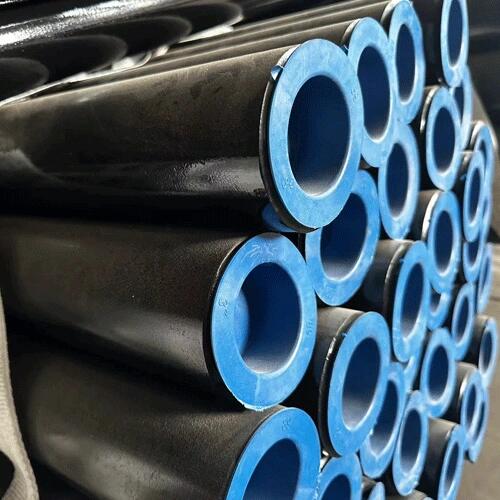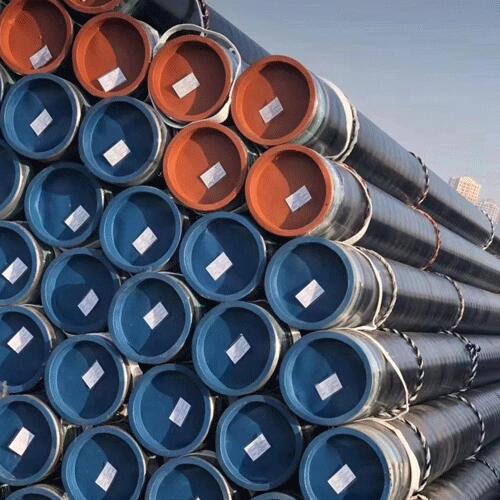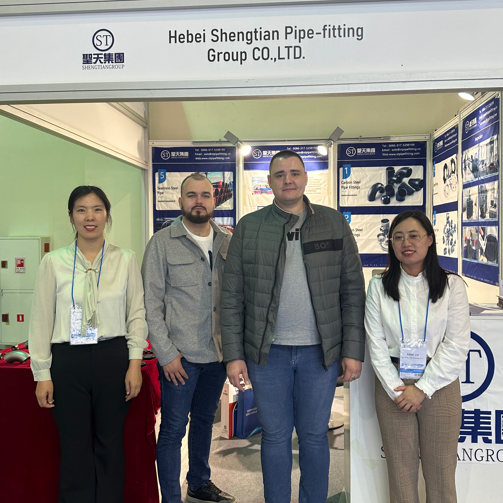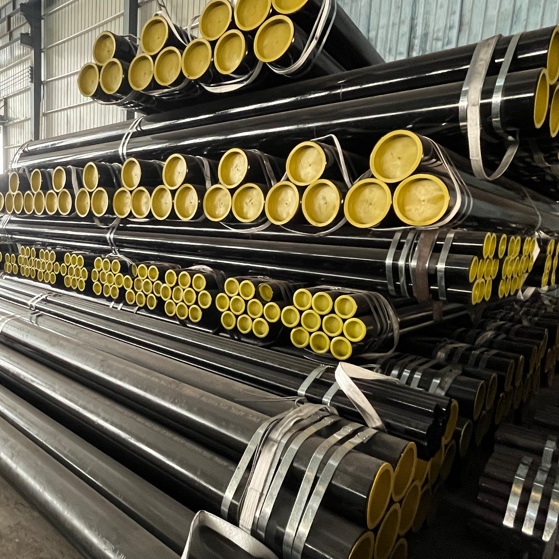Steel pipe manufacturers introduce to you the four specific steps for removing weld seams in pipelines in 2024 as follows:
1. Chemical cleaning
Cleaning: Use solvents and emulsions to clean the inside of the welded pipe to remove oil, grease, dust, lubricants and similar organic matter. However, it cannot remove rust, oxide scale, flux, etc. on the surface of the steel, so it is only used in the weld removal operation. as an auxiliary means.
Pickling: Generally, chemical and electrolytic methods are used for pickling treatment. Only chemical pickling can be used for pipe welds, which can remove scale, rust, and old coatings. Sometimes it can be used as a reprocessing after sandblasting to remove the welds. .
Although chemical cleaning of the inside of welded pipes can achieve a certain degree of cleanliness and roughness on the surface, the anchor lines are shallow and can easily cause pollution to the surrounding environment.
2. Sand blasting
Sandblasting is a common method for removing internal welds from welded pipes. First of all, the welded pipe needs to be fixed correctly to avoid vibration during the sandblasting process. Then, use suitable sandblasting equipment for sandblasting to remove oxides and stains from the surface of the welded pipe weld. The pressure of sandblasting and the selection of sandblasting agent need to be adjusted according to different situations to achieve the best results.
3. Mechanical rust removal
Mechanical rust removal is a method of using mechanical equipment to remove dirt and oxides from the surface of welds. Mainly use tools such as wire brushes to polish the welds inside the welded pipes to remove loose scale, rust, welding slag, etc.The rust removal of hand tools can reach Sa2 level, and the rust removal of power tools can reach Sa3 level.
4. Polishing
Chemical polishing:
Chemical polishing results in a smooth surface. The main advantage of this method is that it does not require complex equipment, can polish workpieces with complex shapes, and can polish many workpieces at the same time, with high efficiency. The core issue of chemical polishing is the preparation of polishing fluid. The surface roughness obtained by chemical polishing is generally several 10 μm.
Electrolytic polishing:
Electrolytic polishing relies on selective dissolution of tiny protrusions on the surface of the material to make the surface smooth. Compared with chemical polishing, the influence of cathode reaction can be eliminated and the effect is better.
Ultrasonic polishing:
Ultrasonic polishing puts the workpiece into an abrasive suspension and places it together in the ultrasonic field. It relies on the oscillation of ultrasonic waves to grind and polish the abrasive on the surface of the workpiece. The macro force of ultrasonic processing is small and will not cause deformation of the workpiece, but the production and installation of tooling is difficult. Ultrasonic processing can be combined with chemical or electrochemical methods. On the basis of solution corrosion and electrolysis, ultrasonic vibration is applied to stir the solution to separate the internal welds of the welded pipe. The cavitation effect of ultrasonic waves in the liquid can also inhibit the corrosion process and facilitate surface brightening.
Fluid polishing:
Fluid polishing relies on high-speed flowing liquid and the abrasive particles it carries to wash away the surface of the workpiece to achieve the purpose of polishing. Abrasive jet machining, liquid jet machining, fluid power grinding, etc. Fluid power grinding is driven by hydraulic pressure, which causes the liquid medium carrying abrasive particles to reciprocate across the workpiece surface at high speed. The media is mainly made of special compounds with good flow properties under lower pressure and mixed with abrasives. The abrasives can be silicon carbide powder.
Through the four steps of sand blasting, chemical cleaning, mechanical rust removal and polishing, pipe welds can be easily removed and weld problems can be solved. These methods need to be carried out under correct operating and equipment conditions to achieve good results.How to contact our steel pipe factory at any time if you have any questions Email: [email protected]
 Why should Seamless steel pipes be epoxy powder coated?
Why should Seamless steel pipes be epoxy powder coated?
 ASTM A106 Thick-walled steel pipe production steps
ASTM A106 Thick-walled steel pipe production steps
 Shengtian Group successfully participated in the Russian Oil and Gas Exhibition
Shengtian Group successfully participated in the Russian Oil and Gas Exhibition
 Is API 5L Black Steel Pipe Good For Air Lines?
Is API 5L Black Steel Pipe Good For Air Lines?